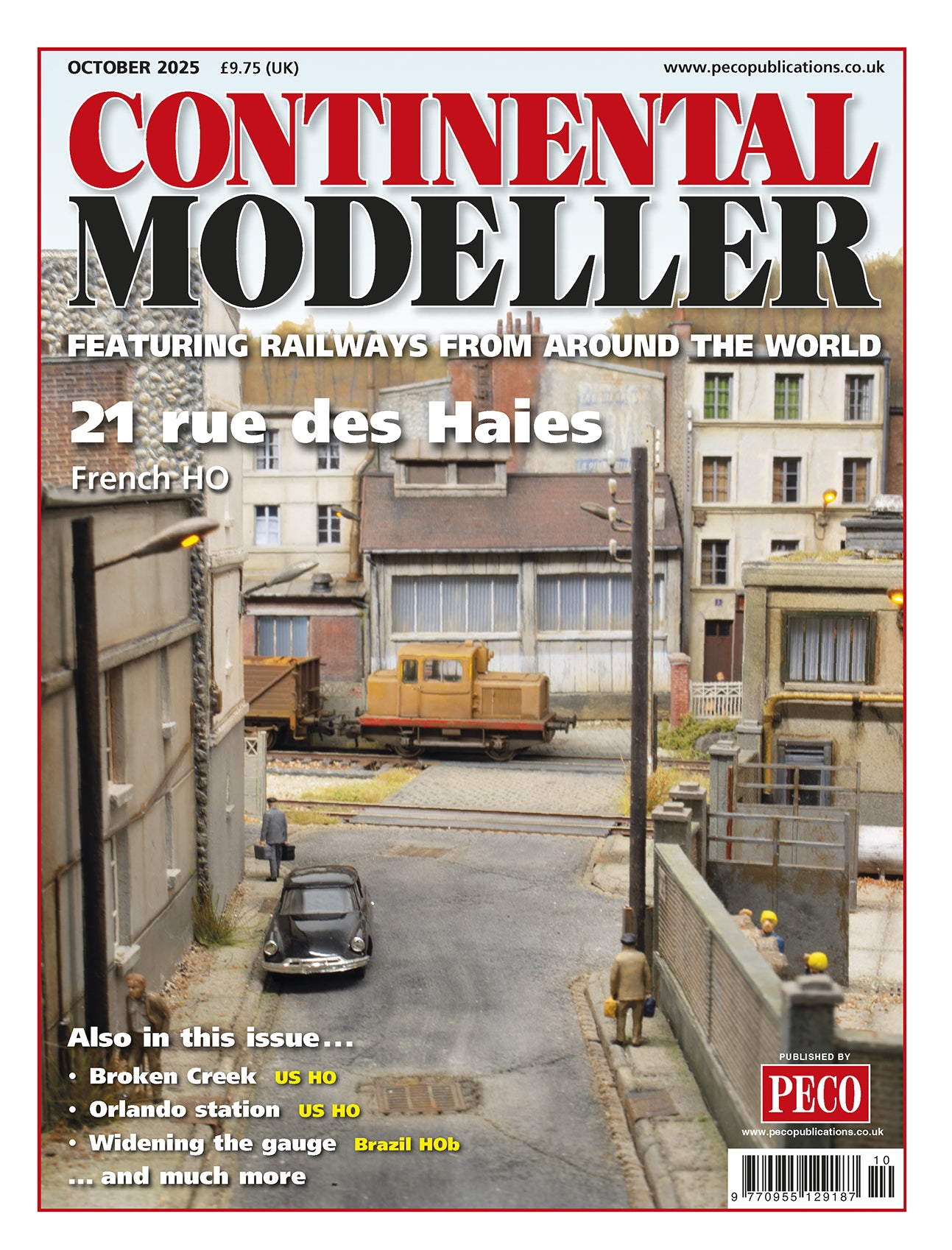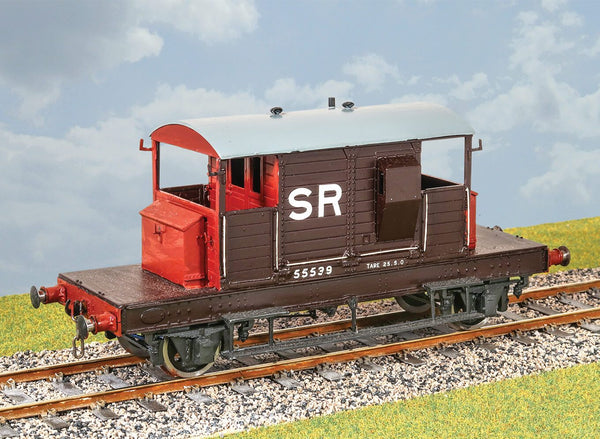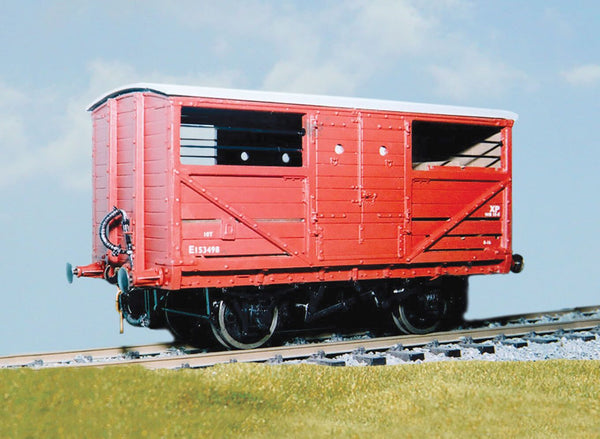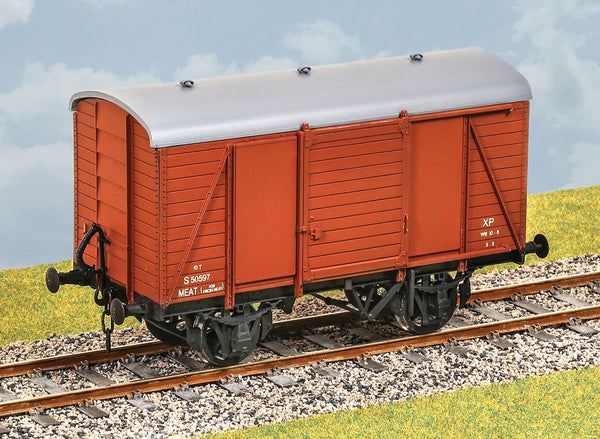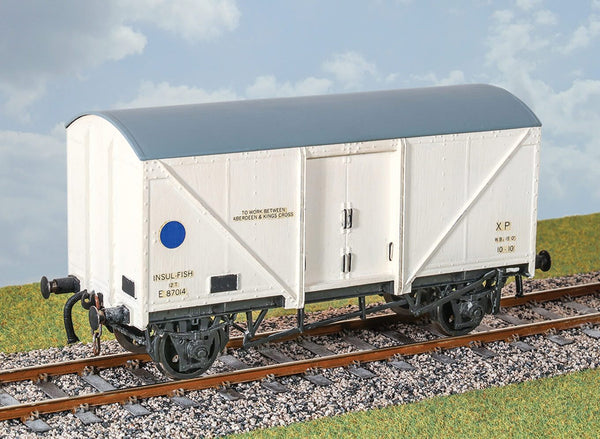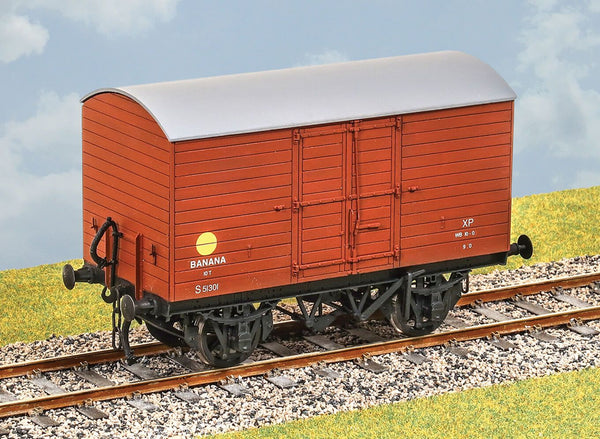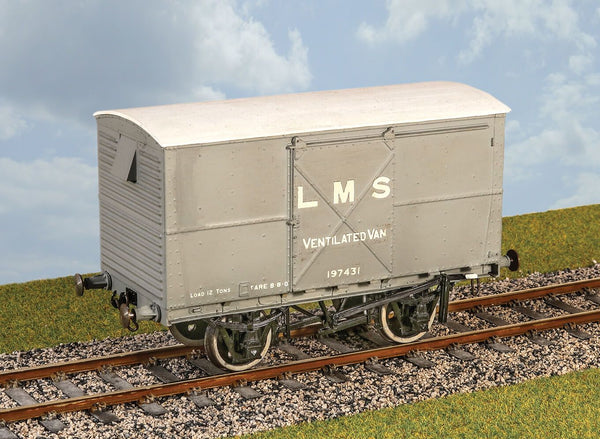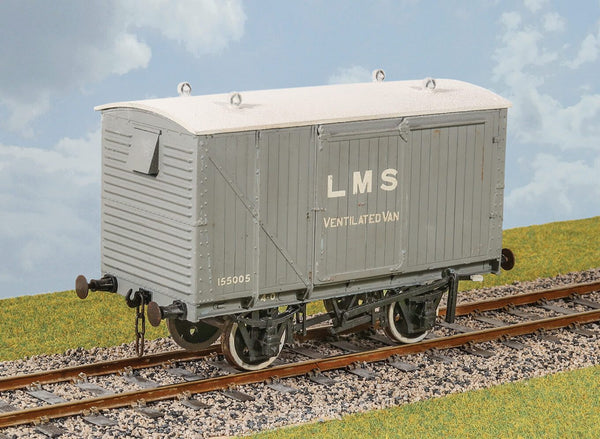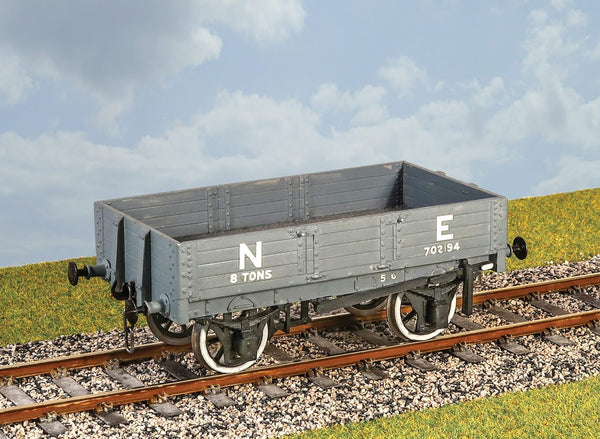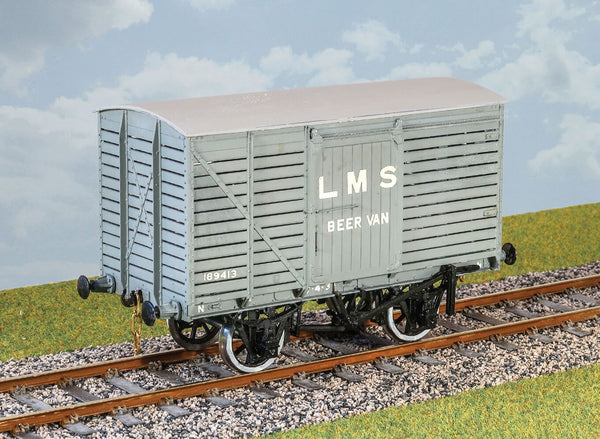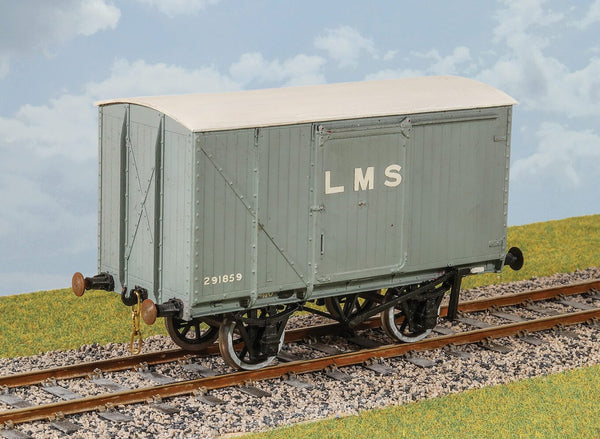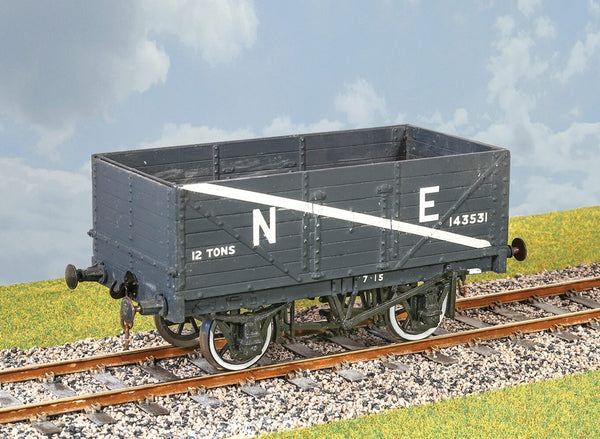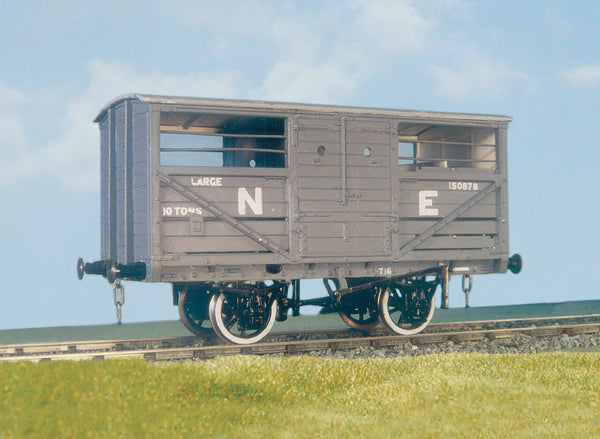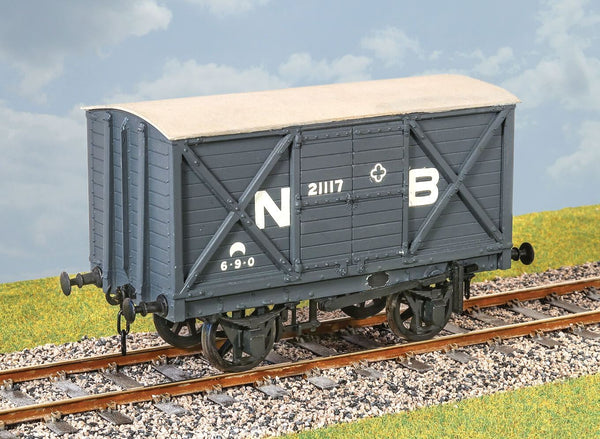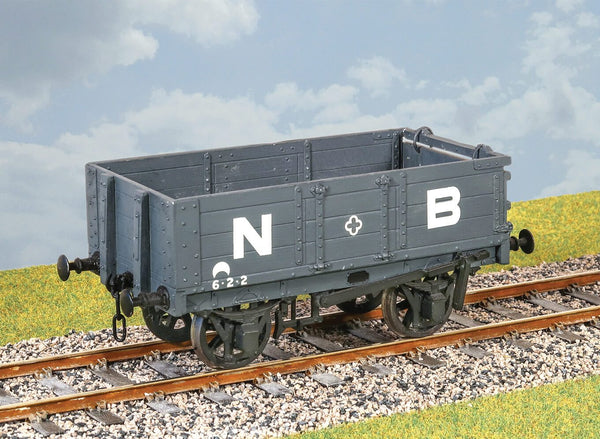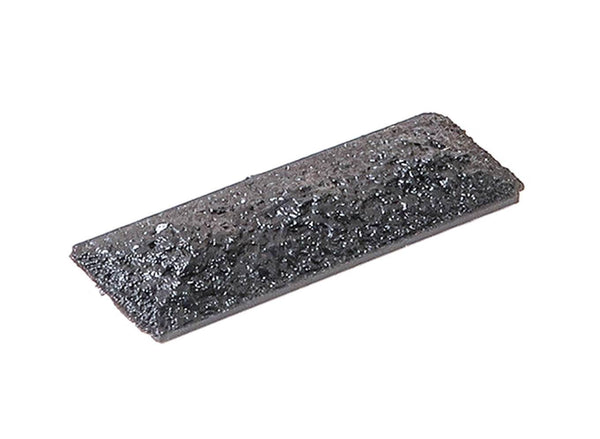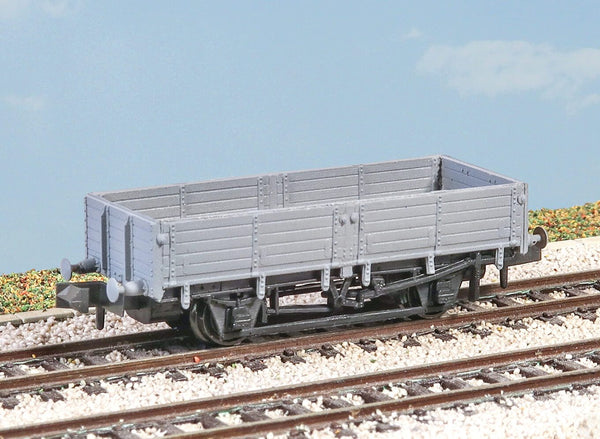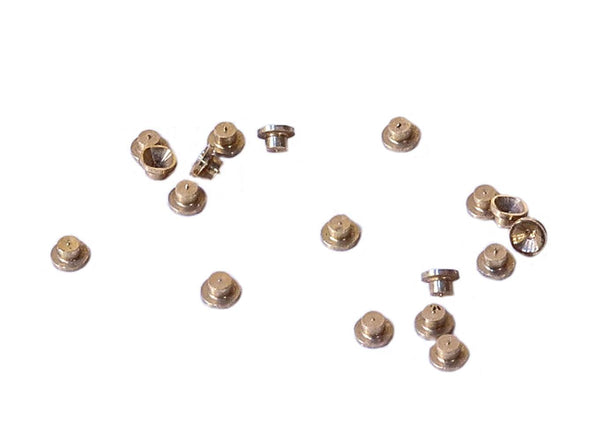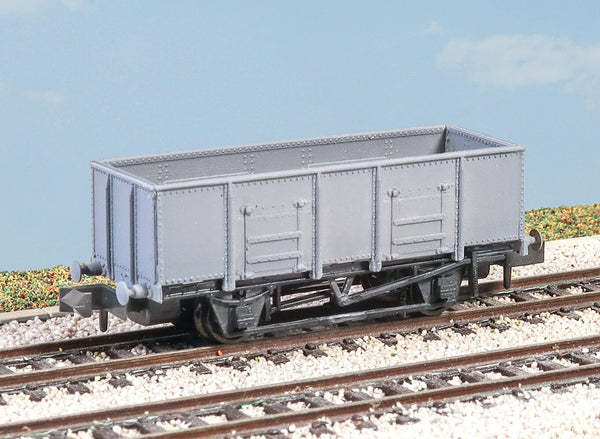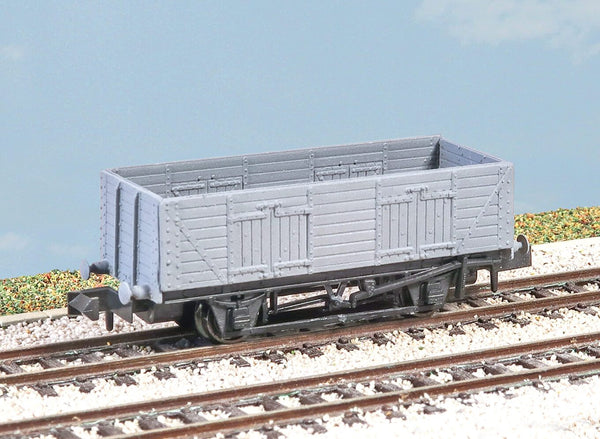BROWSE PECO PRODUCTS
Browse through our complete product portfolio.
738 Products Found
LMS MR Design 20ton Goods Brake Van
849 of these brake vans were built to a Midland railway design, between 1924 and 1927. Despite their early construction, many lasted well into the 1960s, and indeed some went into civil engineer’s service into the 1970s. Transfers for LMS and BR. These finely moulded plastic wagon kits come complete with pin point axle wheels and bearings, 3 link couplings and transfers. This kit is supplied with pre-coloured moulded parts although painting can improve the appearance. Additional parts to enable the vehicle to be modelled incorporating modifications made to the prototypes during their working life are included where appropriate.
SR Standard Cattle Wagon
The Southern built 299 of these vans between 1930 and 1939. Many of these wagons lasted into the 1960s, despite the decline in livestock traffic. Transfers for SR and BR. These finely moulded plastic wagon kits come complete with pin point axle wheels and bearings, 3 link couplings and transfers. This kit is supplied with pre-coloured moulded parts although painting can improve the appearance. Additional parts to enable the vehicle to be modelled incorporating modifications made to the prototypes during their working life are included where appropriate.
LNER 12ton 6 Plank Open Wagon
Standard LNER open wagon for its first decade. Over 20,000 were built. An original Great Northern railway design, the LNER continued production at Doncaster and Darlington. Transfers for LNER and BR. These finely moulded plastic wagon kits come complete with pin point axle wheels and bearings, 3 link couplings and transfers. This kit is supplied with pre-coloured moulded parts although painting can improve the appearance. Additional parts to enable the vehicle to be modelled incorporating modifications made to the prototypes during their working life are included where appropriate.
SR 25ton Goods Brake Van
Construction of this type began in 1929, lasting until 1933. They tended to be used on local and slow goods trains. After Nationalisation they migrated into the BR system, some lingering on into the 1970s and 1980s. Transfers for SR and BR. These finely moulded plastic wagon kits come complete with pin point axle wheels and bearings, 3 link couplings and transfers. This kit is supplied with pre-coloured moulded parts although painting can improve the appearance. Additional parts to enable the vehicle to be modelled incorporating modifications made to the prototypes during their working life are included where appropriate.
LNER Cattle Wagon -Vac Brake Fitted
Earlier wagons in this fleet were converted from 9-foot vehicles, but later ones were constructed on 10-foot chassis from the outset. All were on wooden chassis. Although cattle trade declined on the railways between the wars, many wagons lasted into the 1960s. Transfers for LNER and BR. These finely moulded plastic wagon kits come complete with pin point axle wheels and bearings, 3 link couplings and transfers. This kit is supplied with pre-coloured moulded parts although painting can improve the appearance. Additional parts to enable the vehicle to be modelled incorporating modifications made to the prototypes during their working life are included where appropriate.
SR Meat Van
The Southern built 100 of these vans between 1931 and 1934 to carry fresh meat from the West Country to principle markets in London and the Midlands. They lasted in service into the 1960s. The sliding doors made them quite unusual. Transfers for SR and BR. These finely moulded plastic wagon kits come complete with pin point axle wheels and bearings, 3 link couplings and transfers. This kit is supplied with pre-coloured moulded parts although painting can improve the appearance. Additional parts to enable the vehicle to be modelled incorporating modifications made to the prototypes during their working life are included where appropriate.
BR 12ton Insulated Fish Van
This is a well-known vehicle, derived from the final LNER Fish van design. BR built 1,000 of them. After fish traffic ended they were converted to Parcels Vans (SPV) and lasted into the 1980s. The kit allows both oil and roller bearing axle box versions to be built. Transfers for BR. These finely moulded plastic wagon kits come complete with pin point axle wheels and bearings, 3 link couplings and transfers. This kit is supplied with pre-coloured moulded parts although painting can improve the appearance. Additional parts to enable the vehicle to be modelled incorporating modifications made to the prototypes during their working life are included where appropriate.
SR Banana Van
200 of these vans were built in 1935 and lasted into the 1960s. They were not confined to the Southern, and could therefore be found throughout Britain, especially as bananas were imported through a number of ports. Transfers for SR and BR. These finely moulded plastic wagon kits come complete with pin point axle wheels and bearings, 3 link couplings and transfers. This kit is supplied with pre-coloured moulded parts although painting can improve the appearance. Additional parts to enable the vehicle to be modelled incorporating modifications made to the prototypes during their working life are included where appropriate.
LMS Ventilated Van Steel Body
Built for the LMS in 1929-30, 1,000 in total being supplied. There were various detail differences, but this kit represents one of 150 built by Charles Roberts. Transfers for LMS and BR. These finely moulded plastic wagon kits come complete with pin point axle wheels and bearings, 3 link couplings and transfers. This kit is supplied with pre-coloured moulded parts although painting can improve the appearance. Additional parts to enable the vehicle to be modelled incorporating modifications made to the prototypes during their working life are included where appropriate.
LMS Ventilated Van Corrugated Ends
The LMS built 3,450 of these at Wolverton Works in 1929 – 1931. An early example of corrugated steel ends on a van. Lasted into the early 1960s. Transfers for LMS and BR. These finely moulded plastic wagon kits come complete with pin point axle wheels and bearings, 3 link couplings and transfers. This kit is supplied with pre-coloured moulded parts although painting can improve the appearance. Additional parts to enable the vehicle to be modelled incorporating modifications made to the prototypes during their working life are included where appropriate.
LNER 4 Plank Open Goods Wagon
Although a late Victorian design, construction continued into the Great War. This batch built 1908-1916. Carried all types of traffic from iron castings to tarpaulined loads. Transfers for NBR and LNER. These finely moulded plastic wagon kits come complete with pin point axle wheels and bearings, 3 link couplings and transfers. This kit is supplied with pre-coloured moulded parts although painting can improve the appearance. Additional parts to enable the vehicle to be modelled incorporating modifications made to the prototypes during their working life are included where appropriate.
LMS Beer Van
100 vehicles built in 1929, featuring slated sides and ends to keep contents cool! Many worked between Burton On Trent and London St. Pancras. Lasted until 1960s. Transfers for LMS and BR.These finely moulded plastic wagon kits come complete with pin point axle wheels and bearings, 3 link couplings and transfers. This kit is supplied with pre-coloured moulded parts although painting can improve the appearance. Additional parts to enable the vehicle to be modelled incorporating modifications made to the prototypes during their working life are included where appropriate.
LMS 12ton Van
Built by the LMS, who produced over 2,500 in 1924 – 1926. Midland Railway design with 9-foot steel chassis. Lasted until the early 1960s. Transfers for LMS and BR. These finely moulded plastic wagon kits come complete with pin point axle wheels and bearings, 3 link couplings and transfers. This kit is supplied with pre-coloured moulded parts although painting can improve the appearance. Additional parts to enable the vehicle to be modelled incorporating modifications made to the prototypes during their working life are included where appropriate.
RCH 1923 Pattern 7 Plank Mineral Wagon
Specified by the Railway Clearing House as the standard medium capacity coal wagon. Dates from 1923 and has oil lubricated axle boxes. In service until the early 1960s. These finely moulded plastic wagon kits come complete with pin point axle wheels and bearings, 3 link couplings and transfers. This kit is supplied with pre-coloured moulded parts although painting can improve the appearance. Additional parts to enable the vehicle to be modelled incorporating modifications made to the prototypes during their working life are included where appropriate.
LNER Standard Cattle Wagon
915 built by the LNER during the 1920s. This kit features the non-vacuum brake fitted version, with Morton brakes. Includes internal moveable partition. Withdrawn in the 1950s. Transfers for LNER. These finely moulded plastic wagon kits come complete with pin point axle wheels and bearings, 3 link couplings and transfers. This kit is supplied with pre-coloured moulded parts although painting can improve the appearance. Additional parts to enable the vehicle to be modelled incorporating modifications made to the prototypes during their working life are included where appropriate.
LNER 8ton Goods Van
Dating from 1893 to 1903, some of these vans survived until Nationalisation. Being intended for general goods traffic they would have travelled across the whole network. These finely moulded plastic wagon kits come complete with pin point axle wheels and bearings, 3 link couplings and transfers. This kit is supplied with pre-coloured moulded parts although painting can improve the appearance. Additional parts to enable the vehicle to be modelled incorporating modifications made to the prototypes during their working life are included where appropriate.
LNER Jubilee Coal Wagon
A classic late Victorian design (1887) widely used in Scotland until nationalisation. Built for private owners and the NBR. Some lasted into the BR period. These finely moulded plastic wagon kits come complete with pin point axle wheels and bearings, 3 link couplings and transfers. This kit is supplied with pre-coloured moulded parts although painting can improve the appearance. Additional parts to enable the vehicle to be modelled incorporating modifications made to the prototypes during their working life are included where appropriate.
Coal Loads for Bachmann (TM) Hopper Wagons
Pack of 10, suitable for 1/160 scale MGR Hopper wagons.
SR 20ton Sleeper Wagon
Introduced in 1928 (diagram 1771), and still in service carrying a wide variety of Civil Engineer’s materials on BR Southern Region. These finely moulded plastic wagon kits come complete with pin point axle wheels. Glue and paint will be required, along with appropriate transfers .
LMS 20ton Loco Coal Wagon
From 1936, these wagons (diagram 1974) carried coal to the company’s loco depots. Used by for general coal traffic until the late 1960s. These finely moulded plastic wagon kits come complete with pin point axle wheels. Glue and paint will be required, along with appropriate transfers .
BR Pipe Wagon
Introduced in 1949 (diagram 1/462), and intended to carry cast iron pipes, but were also used widely for other loads. Examples survived into the 1980s. These finely moulded plastic wagon kits come complete with pin point axle wheels. Glue and paint will be required, along with appropriate transfers .
LNER 20ton Loco Coal Wagon
A standard 1930s design, they carried coal to the company’s loco depots. Used by BR for general coal traffic. Withdrawn around 1960. These finely moulded plastic wagon kits come complete with pin point axle wheels. Glue and paint will be required, along with appropriate transfers .



